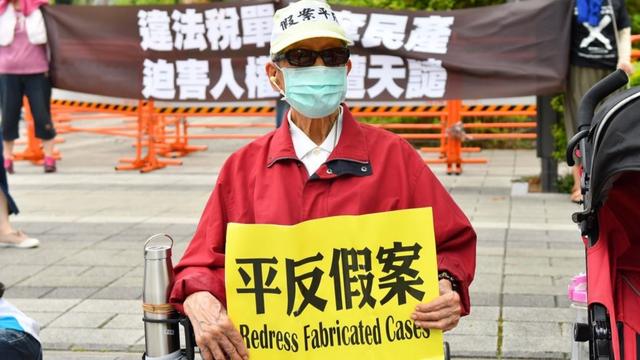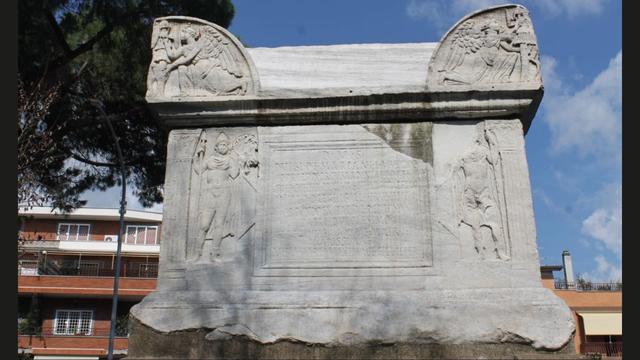There were fake news before the expression “fake news” became common. Spiritual minorities were often among their targets, including Tai Ji Men.
by Massimo Introvigne*
*Conclusions of the webinar “For a Correct Information on the Tai Ji Men Case,” co-organized by CESNUR and Human Rights Without Frontiers on September 29, 2022, after the International Day for Universal Access to Information (September 28).

The International Day for Universal Access to Information was added by the United Nations to its list of days of observance in 2019, although UNESCO had celebrated it since 2016. The rights its promoters wanted to focus on included the right to receive correct information, and warned against fake news, particularly when they are spread by governments.
I am a native of Rome, and my grandmother used to take me to see the grave of Emperor Nero (37–68), telling me how bad he was. Later, I learned that what tourists still visit as “Nero’s Grave” may in fact be the grave of somebody else, but this was not important. The infamous memory of Nero stayed with me.
My grandmother was a pious Catholic, and told the story in a very simple way. Nero persecuted the Christians, for the good reason that he believed to be God himself, so Jesus Christ could only be an imposter. He killed several thousand Christians, men, women, and children. They were thrown to the lions, crucified, or burned alive. The carnage appeared excessive even to some of Nero’s supporters. To justify it, he spread the false rumors that Christians used black magic, and ritually killed and ate children. But these accusations of imaginary crimes became less and less believable. So, he decided to accuse them of a real crime. Arsonists had burned the city of Rome in 64 CE. Nero accused the Christians of being responsible of the fire. In fact, he had burned Rome himself.
I am aware that some contemporary historians such as Princeton’s Edward Champlin remind us that Nero’s story mostly reached us through the emperor’s opponents, both Christian and non-Christian, and may include fabrications and exaggerations. However, Champlin admits that other eminent modern historians believe that the substance of the traditional story is true.

Nero is back, and this time he has got journalists on his command. What we can call “Nero’s formula” is at work against many persecuted religious minorities throughout the world today. The formula is old, but it still works. Persecute a religious group. Justify the persecution by inventing false stories about them. If this is not enough, attribute to the persecuted group your own crimes. Then, persecute it even more. Insist that the persecution is needed by spreading more false rumors. And so on.
One can claim that we are no longer in Nero’s times. And rightly so. Nero had at his disposal only rumors spread by his agents in Rome’s farmers’ markets. Today, we have fake news. On January 11, 2017, Donald J. Trump held his first press conference as President-elect. He presented himself as victim of a massive “fake news” campaign. “It’s all fake news. It’s phony stuff. It didn’t happen,” he said, referring to Russian actions to favor his elections. And he told a CNN journalist, “Your organization is terrible… You are fake news.”
The genie was out of the bottle. “Fake news” became a household word overnight. In fact, Trump had used it during the campaign in 2016, but now he commanded planetary attention. Unfortunately for Trump, once unleashed, the genie could not be controlled. The President’s opponents started accusing him both of spreading fake news and to have been elected thanks to fake news fabricated by his Russian friends.
Interestingly, there are now hundreds of books and academic articles on “fake news,” but none of them is older than 2016, when Trump first used the expression during his presidential campaign. University of Berlin’s Axel Gelfert has defined “fake news” as “the deliberate presentation of (typically) false or misleading claims as news, where the claims are misleading by design.”

“Fake news” is not simply “false news.” It is false news deliberately circulated through sustained and reiterated campaigns, and presented in such a way that many would believe it is true. There are two reasons why people believe fake news. First, it often comes from some in authority, such as politicians, high state bureaucrats, or prosecutors. Second, Gelfert argues that skilled producers of fake news exploit four pre-existing cognitive biases:
– confirmation bias: we accept new information if it confirms our beliefs and prejudices;
– repetition effect: “if they continue to say it, it should be true;”
– priming: use of words that trigger a non-conscious memory reaction, e.g., in
our field, “cult;”
– affective arousal: emotions lower our defenses, e.g. “they use black magic,” or “they evade taxes,” something we dislike because we all have to pay taxes.
As it often happens, when the expression “fake news” became popular in 2016, fake news already existed, including against minority religious or spiritual movements. Without going back to Nero, who could not count on the modern media, the contemporary massive campaigns of “mediabolization” (to borrow Willy Fautré’s word) against groups labeled as “cults” both in non-democratic and democratic countries started at least in the 1970s.

In Taiwan, Prosecutor Hou Kuan-Jen offered since 1996 a textbook example of spreading fake news to support the persecution of a spiritual movement in the case of Tai Ji Men. He accused them, ridiculously, of “raising goblins,” i.e., of practicing black magic, an accusation as old as Nero’s campaigns against the Christians, and of the unpopular crime of tax evasion. He skillfully manipulated the media. His tall tales were accepted at face value because he was a prosecutor and many believed a prosecutor would not lie.
The consequences of Hou’s irresponsible campaign of fake news are still haunting Tai Ji Men today. Yet, with respect to 1996, there is a difference. Now, dozens of scholars have analyzed the global phenomenon of fake news. We know how they work. And we know how the truth can be re-established, although we also know it is not easy. This is the reason why we convened today. Let’s work together to re-establish the truth on the Tai Ji Men case.
Source: Bitter Winter

